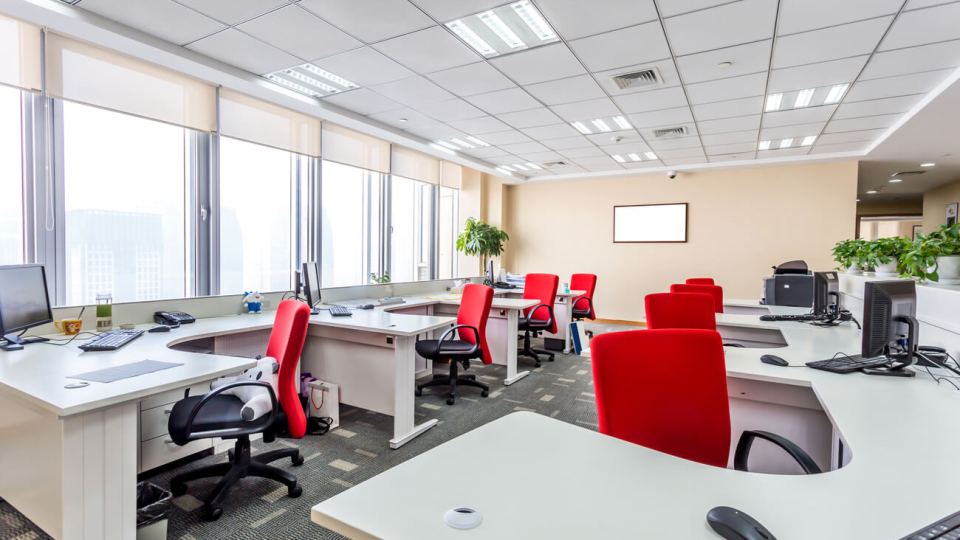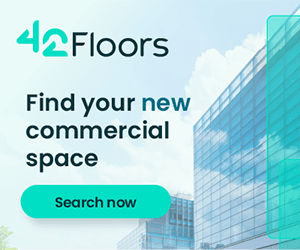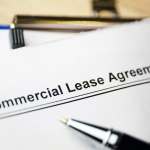What Is the Difference Between Rentable and Usable Square Feet?
One of the most important distinctions to make when looking for office space to lease is the difference between the rentable and usable square footage of a property. Typically, office space listings include the rentable square footage of a property, which is more area than what the tenant will utilize in the end. But, what is the difference between the two and how can you get the most office space and best amenities in your lease?
What Is the Usable Square Footage?
The usable square footage of a property strictly refers to the specific area that a tenant will occupy and utilize. This means that any common areas shared with other tenants are excluded from the usable square footage of an office space
For example, when a tenant only leases part of a floor, the usable square footage includes all of the tenant’s office space, plus any storage or private restrooms that they have exclusive access to. Meanwhile, any of the floor’s shared areas — such as hallways, common restrooms and shared lobbies — are excluded.
Note that the usable square footage is usually measured from the outside of the exterior walls and up to the middle of interior walls, and that the figure also typically includes the space occupied by architectural elements, such as columns and recessed entrances. This is the standard measuring practice used by the Building Owners and Managers Association International (BOMA), so ensure that your lease specifies that measurements were taken according to BOMA guidelines.
Alternatively, when a tenant occupies a full floor, the usable square footage extends to everything inside the boundaries of the building floor — excluding stairwells and elevator shafts — because the floor tenant is the only one using these amenities. This means that a full-floor tenant’s usable square footage will include common areas — such as kitchens, hallways and reception areas — that would have been shared in a multi-tenant floor. In this case, usable square footage could also include other, non-usable areas, such as tech rooms, electrical rooms or janitorial closets. Make sure you go over all the details in your lease with your future landlord and consider collaborating with a tenant broker to get the best terms.
What Is the Rentable Square Footage?
A commercial office building includes more than just private offices and open spaces for desks. Rather, shares of spaces — like corridors, meeting rooms, lobbies, stairways and restrooms — used by several tenants are included in the rentable square footage of a property. So, the rentable square footage is obtained by taking a tenant’s usable square footage and adding a pro-rata share of building common areas. In this way, each tenant pays for these common areas in proportion to the amount of space they lease in the building.
How Is Rentable Square Footage Calculated?
To calculate a tenant’s rentable square footage, landlords use what is called a load factor (also called a common area factor or an add-on factor). This number is based on the percentage of common areas found in the building. The load factor is commonly between 1.10 and 1.20, although it may be higher in some properties.
For example, if a building spans 100,000 square feet (80,000 square feet of which is usable and the remaining 20,000 in common areas), the load factor would equal the rentable square footage divided by the usable square footage, or 1.25 (100,000 ÷ 80,000 = 1.25).
This load factor is then multiplied by individual tenants’ usable square footage to come up with the total rentable square footage. Going back to our example, if a company wanted to lease 5,000 usable square feet in the property, this number would be multiplied by the load factor of 1.25 to reach the amount of rentable square feet (5,000 usable square feet x a load factor of 1.25 = 6,250 rentable square feet). As such, the square footage listed would likely be the rentable amount — 6,250 square feet — which would then be multiplied by a rental rate to determine the company’s total annual or monthly rent.
How to Get the Best Deal on Office Space Knowing Load Factors & Rentable Square Feet
Keeping these calculations in mind can help you get a better office space lease. For instance, consider that you’re interested in leasing 5,000 usable square feet of office space and you found two spaces with the same rental rate. However, one is a building with a load factor of 1.15, while the other has a load factor of 1.25.
In the first building, the rent would be based on 5,750 rentable square feet (5,000 usable x 1.15), whereas the second building would charge rent based on 6,250 rentable square feet (5,000 x 1.25). In either location, you’d still get the same amount of office space for desks and company operations. The only difference would be the size of the shared areas. Consequently, the first building — with its lower load factor — could be a better deal, potentially saving the company significant money in the long run.
On the other hand, the company may decide that the extra money is worth the second property’s larger, more impressive lobby, additional kitchenettes and general restrooms to reduce contact. In this case, the company might value the amenities more than the money saved with the first property.
Once you factor in location, quality of amenities and asset class, recent renovations, parking ratios and other elements that usually go into the lease rate, the best way to compare two prospective office spaces is to take a tour — virtual or in-person — and collaborate closely with a real estate expert who can give you the best tips. Nevertheless, knowing the calculations behind the rentable and usable square footages is a great starting point for knowing what you’ll be paying for when leasing. As such, the most important thing is to do your math and make informed decisions about what is most important to you in your future office space.












